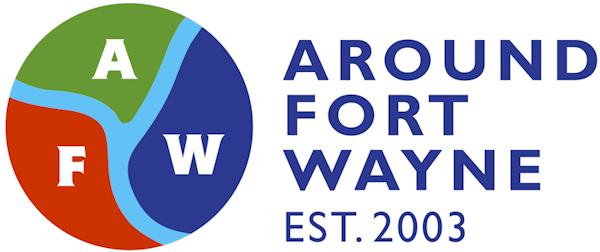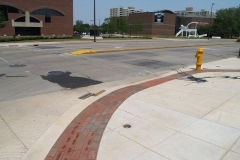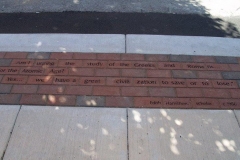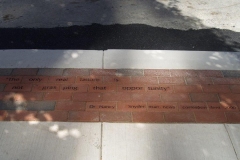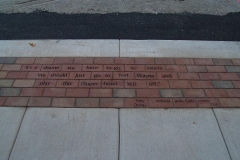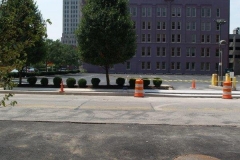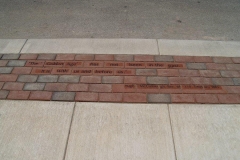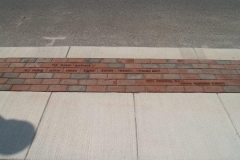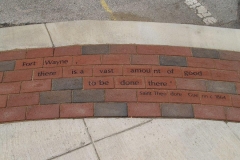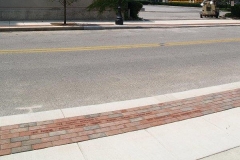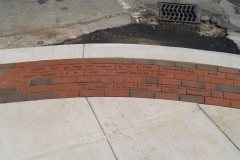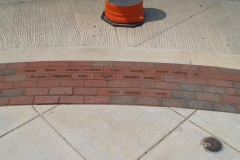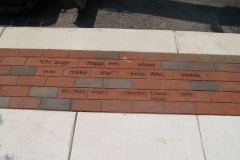![]()
Press release from The History Center:
Buffalo Tro to Raise Dollars for Heritage Education Fund
Fort Wayne’s most unique fund raiser – the History Center’s Buffalo Tro -takes place on September 24
(August 23, 2010) – Proceeds from the evening benefit the Heritage Education Fund (HFE), which provides free admission to the History Center for area students grades K-12. Last year’s attendance was a record breaking 7,000 students in 206 school groups.
“This is the highest school group attendance total on record, an 83-year high dating from the time when the organization first offered tours of the Old Swinney Homestead in 1927,” said Todd Maxell Pelfrey, History Center executive director.
About 10 percent of the HEF budget comes from the Buffalo Tro fund raiser. Other funding is provided by donations and the Olive B. Cole Foundation. Schools benefiting from the HEF are in Allen, DeKalb, LaGrange, Noble and Steuben counties.
The Buffalo Tro, now in its fifth year at the Chief Richardville House, stems from the time when Chief Jean Baptiste Richardville hosted dinner parties at his home, located at what is now 5705 Bluffton Road.
An invitation to one of his parties was a sought-after commodity in 1827 when prominent Fort Wayne citizens would vie to attend dinners with the richest man of the time in Fort Wayne.
The Buffalo Tro presents an introduction to Great Lakes Region Indian cooking, followed by the cooking of hearty buffalo steaks directly on a large bed of smoldering coals, a traditional method that sears in flavor and juices. The steaks are part of a catered dinner.
Evening activities will also incude cultural interpretation, music by the Prairie Fire String Band, and a silent auction. To reserve tickets, which are $50 per person, call Stephanie Essex at 426-2882, ext 308, by Sept. 17.
For more information, visit www.fwhistorycenter.com.
Some background information on Chief Richardville from the History Center’s web site:
When it came to negotiating with the United States government, perhaps no Native American ever did it better than Miami Chief Jean Baptiste de Richardville. The home he built in 1827 is silent testimony to a strong business sense that resulted in his being the richest man in Indiana at the time of his death in 1841. Today his house is recognized as the oldest Native American dwelling in the Midwest and the first Greek Revival style house in northeast Indiana. Recently restored, the site affords visitors an opportunity to truly walk in the footsteps of history.
Born in 1761, Richardville was the son of a French fur trader father and a Miami Indian mother – Tacamwa, sister to the Miami war chief Little Turtle. Richardville and his mother were among the earliest entrepreneurs native to the Fort Wayne and Allen County area. Together they built a trading empire based on control of the “long portage” between the St. Mary’s and Wabash rivers, joining two water systems and thereby completing a pathway for commerce that extended from Canada to the Gulf of Mexico.
As American settlements spread through the Old Northwest Territory, it became clear that the United States government intended to remove local Indians and inhabit their land. Richardville, through clever negotiation, was able to maintain a Miami presence in Indiana long after other tribes had been forced to leave the area, notably the Piankashaws in 1805 and the Wea in 1820.
In 1818, through Richardville’s intervention, individual families were given legal land grants as small parcels of privately held reserves scattered throughout northern Indiana. Richardville himself eventually controlled over twenty square miles of choice property along the St. Joseph, St. Mary’s, Mississinewa, Salamonie and Wabash rivers. This act provided the means for half of the Miami people to remain in Indiana after their official removal in 1846, five years after Richardville’s death.
In recognition of his role as a principal chief among the Miami people, the U.S. government provided $600 toward construction of a house for Richardville along the banks of the St. Mary’s River. The chief contributed some of his own wealth toward the house that eventually cost $2,200 when it was built in 1827. In his spacious and elegant home, he reportedly entertained some of Fort Wayne’s earliest civic leaders like Samuel Hanna, Allen Hamilton, and William Rockhill.
